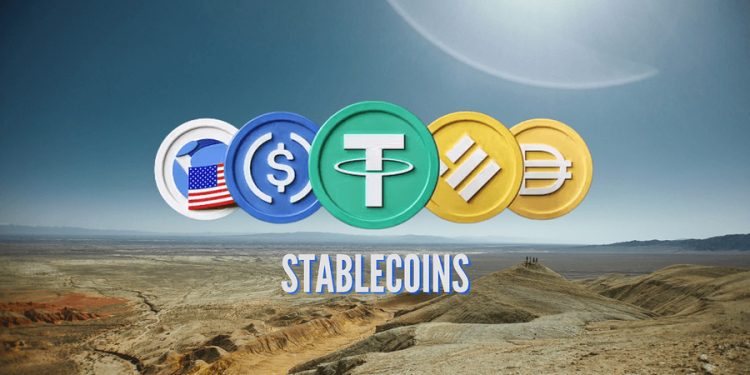Stablecoins have emerged as a popular alternative to traditional fiat currencies, offering a more stable and secure means of exchange. While they were initially developed for use in the cryptocurrency world, stablecoins are now being embraced by other industries, including gaming, gambling, and online marketplaces. In this article, we’ll explore the potential uses of stablecoins in these industries, and the benefits they offer.
Introduction to Stablecoins
Stablecoins are digital currencies that are designed to maintain a stable value, typically pegged to a fiat currency like the US dollar. There are several different types of stablecoins, but most fall into one of three categories:
- Fiat-backed stablecoins: These stablecoins are backed by a reserve of fiat currency, such as the US dollar or the euro. Examples include Tether (USDT), USD Coin (USDC), and Paxos Standard (PAX).
- Crypto-backed stablecoins: These stablecoins are backed by a reserve of cryptocurrency, such as Bitcoin or Ethereum. Examples include MakerDAO’s DAI and BitShares (BTS).
- Algorithmic stablecoins: These stablecoins use an algorithm to adjust the supply of the stablecoin to maintain its peg. Examples include Ampleforth (AMPL) and Basis Cash (BAC).
Stablecoins in Gaming
Gaming is one of the fastest-growing industries in the world, with billions of dollars spent on games and in-game purchases each year. However, traditional payment methods like credit cards and PayPal can be slow, expensive, and often involve high fees. Stablecoins offer a faster, cheaper, and more secure alternative.
One of the key benefits of using stablecoins in gaming is that they can be used for microtransactions. This means that gamers can make small purchases within a game without having to pay high transaction fees. Additionally, stablecoins can be used across multiple games and platforms, which can help to reduce the fragmentation of the gaming industry.
Stablecoins in Gambling
Online gambling is another industry that can benefit from the use of stablecoins. Traditional payment methods like credit cards and bank transfers can be slow and often involve high fees. Additionally, there are often restrictions on the use of these payment methods for online gambling in certain countries.
Stablecoins offer a faster, cheaper, and more secure alternative. Because stablecoins are decentralized, they can be used for online gambling in countries where traditional payment methods are restricted. Additionally, stablecoins can be used for both deposits and withdrawals, which can help to simplify the payment process for online gambling sites.
Stablecoins in Online Marketplaces
Online marketplaces like Amazon and eBay have revolutionized the way we shop and do business. However, traditional payment methods like credit cards and PayPal can be slow, expensive, and often involve high fees. Additionally, there are often restrictions on the use of these payment methods for cross-border transactions.
Stablecoins offer a faster, cheaper, and more secure alternative. Because stablecoins are decentralized, they can be used for cross-border transactions without the need for intermediaries like banks or payment processors. Additionally, stablecoins can be used across multiple online marketplaces, which can help to reduce the fragmentation of the online shopping industry.
Benefits of Using Stablecoins
There are several key benefits of using stablecoins in gaming, gambling, and online marketplaces:
- Speed: Stablecoins offer near-instantaneous transactions, which can be particularly valuable in the fast-paced world of gaming and gambling.
- Cost: Stablecoins can be sent for a fraction of the cost of traditional payment methods like credit cards and bank transfers.
- Security: Because stablecoins are decentralized, they are more difficult to hack or manipulate than traditional payment methods.
-
Challenges and Risks of Using Stablecoins
While stablecoins offer many benefits, there are also several challenges and risks associated with their use in gaming, gambling, and online marketplaces.
One of the main challenges is regulatory uncertainty. While some countries have embraced stablecoins and created clear regulatory frameworks for their use, others have been more cautious. In the United States, for example, stablecoins are largely unregulated, which has led to concerns about their potential use for illicit activities.
Another challenge is the potential for market volatility. While stablecoins are designed to maintain a stable value, there is still the potential for fluctuations, particularly in the event of a market shock or economic crisis. This could pose a risk for users who rely on stablecoins for gaming, gambling, or online shopping.
Finally, there is the risk of technical failures or security breaches. While stablecoins are designed to be secure, there is always the potential for technical glitches or vulnerabilities to be exploited by hackers. This could result in the loss of funds or other financial damage.
Examples of Stablecoins in Action
Despite these challenges, stablecoins are already being used in a variety of gaming, gambling, and online marketplace applications. Here are a few examples:
- Enjin (ENJ): Enjin is a gaming platform that allows developers to create and manage blockchain-based games. The platform uses its own stablecoin, the Enjin Coin (ENJ), as a means of exchange within games and across multiple gaming platforms.
- FunFair (FUN): FunFair is a decentralized gaming platform that uses its own stablecoin, the FUN token, as a means of exchange. The platform offers a variety of games, including slots, table games, and sports betting.
- OpenBazaar (OBT): OpenBazaar is a decentralized online marketplace that allows users to buy and sell goods and services using cryptocurrency. The platform supports several stablecoins, including Tether (USDT) and USD Coin (USDC).
Conclusion
Stablecoins offer significant potential for gaming, gambling, and online marketplaces, by providing a faster, cheaper, and more secure means of exchange. While there are certainly challenges and risks associated with their use, the benefits they offer are significant. As stablecoins continue to gain in popularity and adoption, it will be important for regulators, users, and industry players to work together to create a safe and stable ecosystem for their use.









